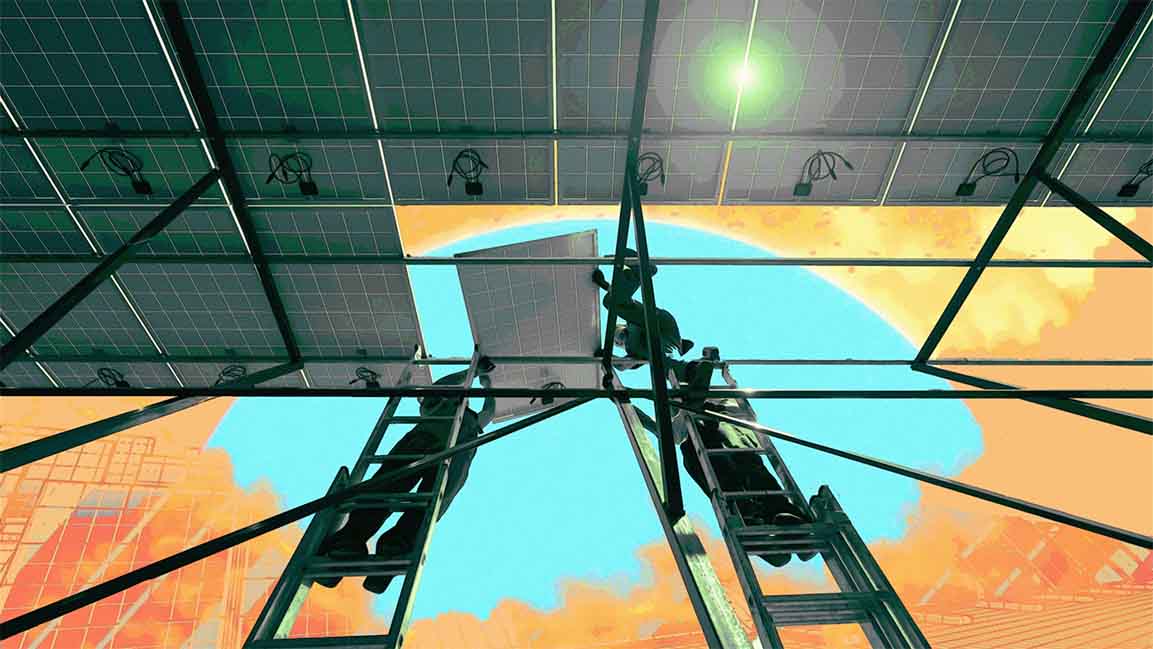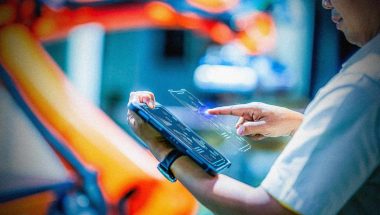- | 9:00 am
Can off-grid energy solutions be the answer to climate-related disasters in the MENA region?
The region is set to be amongst the worst hit by climate change, off-grid power running on renewable energy may prove essential for saving lives when disaster strikes.

According to the latest IPCC report, cyclones, drought, and conflicts over water supply are what the Middle East and North Africa (MENA) can expect as the region faces global warming at double the speed of the rest of the world. Solutions for mitigating the impact of climate change often hit the headlines, but what happens after disaster strikes? Well, firstly, communities lose power.
After a natural disaster, people go an average of 52 hours without power, explains Lauren Flanagan, Co-Founder and CEO of Sesame Solar, a company that has developed “Mobile Nanogrids” that deliver off-grid renewable power during emergencies.
Without power, it becomes tough for aid workers and governments to transport people, goods, equipment, and essential medical supplies. And 94% of people living in settlements due to forcible displacement from conflict and natural disasters are left without electricity to run schools and homes, heat or cool hospitals, or light up roads and streets.
“Fatalities often occur due to a lack of power for medical care and equipment, heat or air conditioning, and water. These hours right after a natural disaster are most imperative for recovery efforts,” says Flanagan.
This makes delivering off-grid energy — any source of power that is not hooked up to pipes, wires, utilities, and cables — essential. To ensure they can keep running, these energy sources are increasingly made to be renewable and self-sufficient. These power supplies may prove the difference between life and death in humanitarian disasters.
POWERING CRITICAL HEALTH SERVICES
Direct Relief is a not-for-profit helping deliver off-grid power to health centers for Syrian refugees in Lebanon. Their President and CEO, Thomas Tighe, explains, “Modern health care presumes constant power availability. But successive years of record-setting wildfires, hurricanes, cold snaps, and flooding that have resulted in extended power shut-offs have eroded the validity of that presumption.”
Without power, lifesaving medicines go bad, electronic health records are inaccessible, essential medical equipment is inoperable, health facilities close their doors, and critical health services halt, he says.
Across the MENA region, aid workers are finding ways to deliver off-grid power sources in the face of large-scale devastation. “Off-grid power is necessary in Yemen because the ongoing conflict has severely damaged the country’s electricity grid, leaving millions of people without access to reliable power,” says Executive Director and UN Under-Secretary-General, Jorge Moreira da Silva.
In Gaza, power shortages impact access to essential services such as healthcare, water, sanitation, and economic opportunities, he adds. Palestinians living in the region must use potentially hazardous sources of electricity and light, such as batteries and candles.
Direct Relief’s off-grid power “solar systems” consist of solar panels, inverters, and backup batteries. These systems are fixed to health centers, like those installed as part of the United Nations Office for Project Services (UNOPS) power projects in Gaza and Yemen that service hospitals and houses. Off-grid technology in these regions draws on solar panels, wind turbines, and other renewable sources which generate electricity.
“The solar panels are connected to a battery storage system that can store excess energy during the day to be used at night. The system also includes a smart meter to monitor energy usage and allow customers to pay for their energy,” explains Moreira da Silva.
Resembling construction or shipping containers on a flatbed truck, Sesame Solar’s nano grids are moveable. Easily transported into disaster zones, they can be set up in as little as 15 minutes. Fueled by solar power, green hydrogen, or battery storage, they offer days or even weeks of power supply. Hydrogen gas is stored inside the grid in a solid state and later used to fuel a hydrogen fuel cell.
But not all off-grid power is fossil fuel-free. Traditional disaster response efforts have included deploying diesel-powered generators when grids go out, contributing to climate change via carbon emissions, toxic fumes, and noise pollution.
“A 5kW diesel generator can emit as much CO2 as 450 cars, according to federal figures,” says Flanagan. These polluting power sources may act as short-term sticking plasters, exacerbating our colossal climate problem.
LOGISTICAL CHALLENGES
Other challenges are more logistic. In Gaza, UNOPS found it difficult to obtain clearance from the Israeli government to import solar equipment quickly. “This was overcome through day-to-day follow-ups with the authorities,” says Moreira da Silva. With limited power available and everyone needing access, choosing who to provide it was also challenging. “The project team created selection criteria prioritizing households with majority female inhabitants, low-income households, and people living with chronic diseases,” says Moreira da Silva.
In Yemen, where conflict continues, safety concerns also impinged on the progress of the off-grid project. In Lebanon, running into technical difficulties meant ensuring staff was adequately trained, and batteries were appropriately updated, says Tighe.
There is also the issue of costs. “Some communities in disaster zones lack the capital to purchase one of our Nanogrids to have it on hand for the next disaster,” says Flanagan. She adds that their new business model hopes to remedy this by offering the grids on a multi-year subscription basis.
Flanagan adds that grants, tax rebates, and development funds are increasingly available for funding the decarbonization of disaster preparedness and response. But in Lebanon, “the health facilities also saw decreases in energy costs because of the solar systems,” says Tighe. The UNOPS and Direct Relief teams say renewable energy sources can be cost-effective.
KNOCK-ON EFFECT
Current off-grid projects are working out the kinks and providing a model for future, renewable disaster response. According to those in the humanitarian field, the lifesaving potential for these power supplies is massive. Direct Relief says its solar systems enabled health facilities to operate 16 hours a day, leading to a 32% increase in a health center’s capacity to care for patients.
“By enabling uninterrupted refrigeration for vaccines and insulin, the new power systems boosted medicine inventories and resulted in children receiving immunizations on schedule,” says Tighe.
Nano grids also have a knock-on effect on markets and economies by keeping businesses running when power is low, says Moreira da Silva. “The projects have also helped to reduce dependence on imported fossil fuels, which has a long-term economic benefit for the country,” he adds, speaking on the UNOPS project in Yemen.
While no silver bullet, renewable off-grid power sources may offer a shining light for those most at risk from future climate-related conflict and disaster.








































